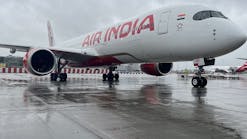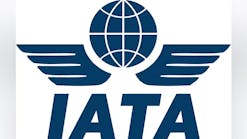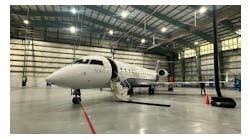American Airlines was flying high in 2001. Its parent company had averaged $1 billion in annual profit for four years, it had just scooped up iconic TWA to become the world's largest airline, and its stock price was at an all-time high.
Then on Sept. 11, 2001, the unimaginable happened, when two of American's planes were seized by terrorists and crashed, one into the World Trade Center and the other into the Pentagon. The attacks plunged the airline industry into a long and deep slump.
American has lost about $7 billion since 9/11, and it's easy to see a simple cause-and-effect. But analysts who follow the company say the truth is more complicated.
"Sept. 11 and its aftermath is probably the largest single cause" of American's struggles, "but not the only one," said Philip Baggaley of Standard & Poor's.
American and other major carriers opened the door to new, low-cost rivals when they cut flight schedules to save money after the attacks. That accelerated a trend toward lower fares and less revenue per passenger for carriers like American, Baggaley said.
As 9/11 has receded into the past, high fuel costs have become the leading scourge of the airline industry, sometimes spelling the difference between profit and loss.
American was already struggling with a downturn in lucrative business travel before 9/11. It lost money in the first six months of 2001.
Ray Neidl, an analyst for Calyon Securities, said parent AMR Corp. was headed for a milder cyclical downturn even without the attacks.
"Trying to separate 9/11 from all of that is pretty much impossible," Neidl said. "But 9/11 devastated the industry."
Neidl believes that 9/11 paradoxically could produce long-term benefits for the traditional airlines like American because it forced them to cut costs and improve efficiency, "which they should have been doing all along."
American's first reaction to the post-9/11 downturn was perhaps predictable: It laid off thousands of workers and grounded airplanes.
Eighteen months later, it won $1.6 billion in wage and benefit concessions from union workers to keep the company out of bankruptcy. It improved efficiency at hub airports in Dallas and Chicago.
Most importantly, passengers have returned. At American and other carriers, planes are more crowded than ever. That's partly because contraction in the industry has left fewer flights for passengers to choose.
The strong demand has let carriers, sometimes led by American, to raise fares more than a dozen times since early 2005.
Mike Boyd, an airline consultant who just completed a report on American for its pilots' union, said management deserves high marks for steering the company through the aftermath of 9/11 without filing for bankruptcy.
"They've done more to get costs down and revenue up than any of the airlines," Boyd said.
Unlike rival United Airlines, which also lost two planes in the 9/11 attacks, American "took a more honorable course because they didn't file for bankruptcy and their employees still have a pension," yet it still has lower costs than United as a ratio of capacity, Boyd said.
The airline has, however, made missteps, Boyd said, especially in making large payments to executives as part of a management-retention plan. Union leaders protested when the size of the bonuses - a few topped $1 million - was disclosed earlier this year.
The bonuses are still a sore point with pilots, who are about to begin contract negotiations and believe they are owed something for contributing to the airline's turnaround. And that puts management in a bind.
"Labor negotiations are always tricky," said analyst Neidl. "Just because (the company) made money for a couple quarters, they still have to be diligent at controlling labor costs."
AMR's balance sheet is another imposing challenge, with $13 billion in long-term debt and more than $9 billion in other liabilities. Its debt carries junk status - it was investment-grade before 9/11.
That means AMR could end up paying more or have to issue new stock to finance an upgrade of its fleet, which Citigroup analyst Andrew Light said is the second-oldest in the industry.
Then, of course, there is the fear of another terror attack.
Continental Airlines Inc. says its August revenue as a ratio of capacity was hurt modestly by the news of a thwarted terrorist plot to bomb trans-Atlantic flights. American's occupancy gains slowed in August, but officials said any fear-related loss in travel was limited to London flights. Analysts say any effect is likely to be temporary, although security and baggage-handling costs could rise.
American and AMR are smaller than they were before 9/11. AMR, which also owns the American Eagle regional airline, has shrunk from nearly 130,000 employees to fewer than 90,000.
American officials declined to be interviewed, saying they didn't wish to talk about 9/11. But in recent public comments, they have portrayed American as a transformed airline with lower costs and a keener eye for new sources of revenue.
Chief Executive Gerard Arpey said recently that airline industry revenue "fell off a cliff in 2001," and the people at American "have been scrambling to adjust to this new reality."
"Like all airlines, we have a lot of work left to do," he said. "But that said, we are charting a path that is unique among traditional carriers."
News stories provided by third parties are not edited by "Site Publication" staff. For suggestions and comments, please click the Contact link at the bottom of this page.






